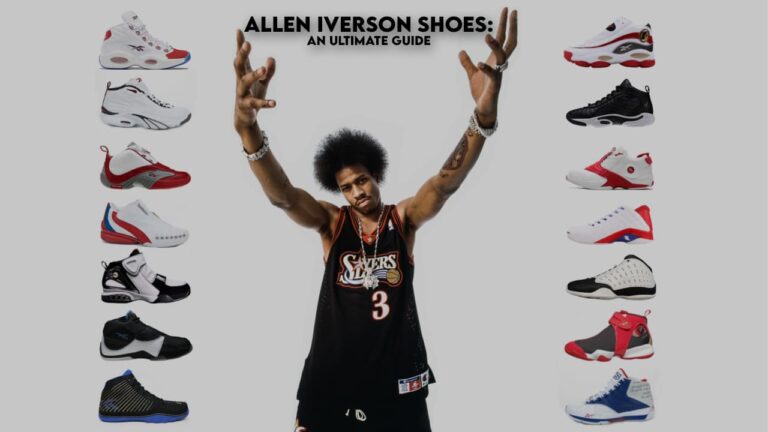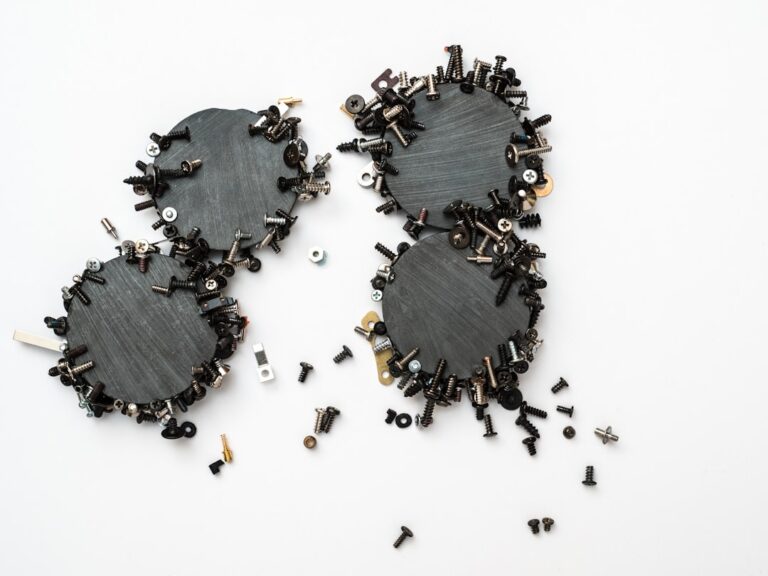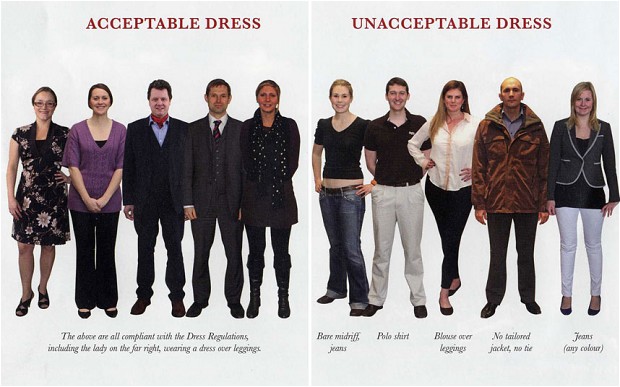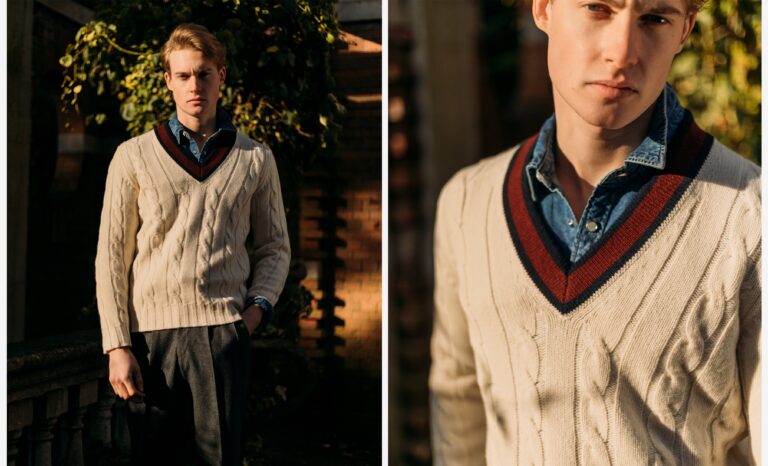Wear thin, moisture-wicking socks underneath hockey skates for optimal comfort and performance. Hockey players should prioritize wearing thin, moisture-wicking socks underneath their skates to ensure maximum comfort and performance on the ice.
These types of socks help keep feet dry by wicking away sweat, reducing the risk of blisters and maintaining a snug fit inside the skates. Thin socks also allow for better control and feel of the skate blade, giving players a greater sense of agility and precision on the ice.
By choosing the right socks to wear under their skates, hockey players can enhance their overall experience on the rink and minimize any discomfort or foot-related issues that may arise during play.
Read Also: 10 Must-Have Outfits to Wear to an Ice Hockey Game: Style, Warmth, and Team Spirit Combined
The Importance Of Proper Gear
Proper gear is essential for hockey players, including what to wear under their skates. Choosing the right socks and base layers can enhance comfort, prevent blisters, and provide support during intense gameplay. Don’t underestimate the importance of selecting suitable gear for improved performance on the ice.
The Significance Of Wearing The Right Protective Gear
When it comes to hockey, wearing the right protective gear is essential. It not only protects you from injuries but also enhances your performance on the ice. Here’s why having the proper gear is of utmost importance:
- Helmets: Wearing a well-fitted helmet is crucial as it protects your head from potential concussions and skull fractures. It also has a visor or cage to shield your face from flying pucks and sticks.
- Mouthguards: A properly fitted mouthguard reduces the risk of dental injuries by absorbing the impact of blows to the face or jaw. It also helps in preventing potential concussions by acting as a shock absorber.
- Shoulder Pads: These protect your upper body, including your collarbone, shoulder joints, and upper arms, from injuries caused by falls, collisions, or accidental hits from sticks or pucks.
- Elbow Pads: Elbow pads shield your elbows from impact and can prevent nasty bruises and fractures. They are particularly important when you’re diving for loose pucks or engaging in physical play.
- Gloves: Hockey gloves provide protection for your fingers, hands, and wrists from slashes, stray sticks, and pucks. They also provide a better grip on your stick, improving your puck handling skills.
- Protective Cup: Protecting your groin area is crucial in a contact sport like hockey. A well-fitted protective cup shields your sensitive areas from hits, slashes, and even accidental falls.
- Shin Guards: These protect your shins, knees, and ankles from slashes and impacts with sticks and pucks. They can also prevent injuries caused by collisions with other players or falls on the ice.
- Skates: Properly fitted skates provide ankle support, protecting against sprains, and allow for better maneuverability on the ice. They should fit snugly to avoid blisters and provide optimal control.
- Sock Tape: Sock tape keeps your shin guards in place and prevents them from shifting during intense gameplay. It reduces the risk of exposing vulnerable areas and ensures continuous protection.
- Neck Guard: While not mandatory in all leagues, a neck guard can protect your neck and throat areas from injuries due to accidental slashes, sticks, or even skate blades.
Wearing the right protective gear is crucial in hockey, as it not only safeguards you from potential injuries but also enhances your overall performance. By ensuring that every part of your body is appropriately protected, you can confidently focus on your game and enjoy playing to your fullest potential.
Remember, safety should always be a top priority, on and off the ice.
Choosing The Right Base Layer
Discovering the right base layer for hockey skates ensures optimal comfort and performance. Find out what to wear under your skates for a seamless experience on the ice.
When it comes to finding the perfect base layer to wear under your hockey skates, there are a few key factors to consider. The right choice can make a significant difference in terms of your comfort, performance, and overall experience on the ice.
In this section, we’ll explore three important factors to keep in mind when selecting a base layer: the importance of moisture-wicking materials, thermal properties for temperature regulation, and compression benefits for muscle support.
Importance Of Moisture-Wicking Materials:
- Opt for base layers made from moisture-wicking materials such as polyester or synthetic blends.
- Moisture-wicking fabrics draw sweat away from your body, keeping you dry and comfortable during intense physical exertion.
- These materials help to regulate your body temperature by allowing moisture to evaporate quickly, preventing overheating.
Thermal Properties For Temperature Regulation:
- Look for base layers with thermal properties that can keep you warm in colder conditions.
- Thermal fabrics are designed to retain heat and provide insulation, allowing you to stay comfortable on the ice.
- Materials such as merino wool or fleece are excellent choices for maintaining optimal body temperature.
Compression Benefits For Muscle Support:
- Consider base layers with compression features to provide muscle support and reduce fatigue.
- Compression garments apply pressure to specific muscle groups, increasing blood circulation and reducing muscle vibration.
- This support can contribute to improved performance and quicker muscle recovery.
Choosing the right base layer for your hockey skates is crucial to ensure your comfort and performance on the ice. By prioritizing moisture-wicking materials, thermal properties, and compression benefits, you can optimize your experience and stay focused on the game.
Stay dry, warm, and supported with the right base layer, and you’ll be ready to tackle anything that comes your way on the ice.
Understanding Socks And Liners
Looking for the right socks and liners to wear under your hockey skates? Understand the importance of proper padding for comfort, protection, and performance on the ice. Choose breathable materials and a snug fit for maximum support.
Hockey skates are essential gear for any hockey player, allowing for swift movements and precise skating on the ice. But have you ever wondered what to wear under your hockey skates? Understanding the role of socks and liners can make all the difference in terms of comfort, performance, and preventing blisters.
In this section, we will explore the importance of socks, the different types of hockey socks available, and the benefits of using liners.
The Role Of Socks In Preventing Blisters:
- Properly fitting socks play a crucial role in preventing blisters, which can be painful and hinder your performance on the ice.
- Socks act as a barrier between your skin and the skate, reducing friction and minimizing the risk of developing blisters.
- They also help to wick away moisture, keeping your feet dry and reducing the chances of blisters caused by excess sweat.
Types Of Hockey Socks Available:
- Traditional hockey socks: These are the most common type of socks worn by hockey players. They are usually made of a durable material, such as nylon or polyester, which provides good moisture-wicking properties.
- Skate socks: These socks are specifically designed to be worn under hockey skates. They are typically thinner than traditional hockey socks to provide a snug fit and reduce bulk around the foot.
- Compression socks: Compression socks offer a tight fit and help to improve circulation, reducing muscle fatigue and enhancing performance. They can also aid in recovery after intense training or games.
Benefits Of Using Liners Under Hockey Socks:
- Liners are thin socks that can be worn underneath your regular hockey socks. They offer several advantages for hockey players.
- Enhanced comfort: Liners provide an extra layer of cushioning and can help alleviate pressure points, ensuring a more comfortable skating experience.
- Reduced friction: By minimizing the direct contact between your skin and the hockey sock, liners help to further reduce friction, preventing blisters.
- Improved hygiene: Liners act as a barrier between your feet and the hockey sock, helping to keep your regular socks cleaner and fresher for longer.
- Moisture management: Liners are designed to wick moisture away from your skin, keeping your feet dry and reducing the chances of blisters caused by excess sweat.
- Added warmth: Liners can provide an extra layer of insulation, helping to keep your feet warm during cold games or practices.
Understanding the role of socks and liners can make a significant difference in your comfort and performance on the ice. Whether you opt for traditional hockey socks, skate socks, or compression socks, using liners can further enhance the benefits and help prevent blisters.
Experiment with different options to find the combination that works best for you and enjoy your time on the ice with happy, blister-free feet!
/cdn.vox-cdn.com/uploads/chorus_image/image/71361840/1241895365.0.jpg)
Credit: www.allaboutthejersey.com
Impact Of Leg Guards
Leg guards play a vital role in providing protection and safety while wearing hockey skates. They are designed to fit comfortably under the skates, offering extra padding and shielding against impacts and injuries during the game. Their impact is crucial for players’ well-being on the ice.
Exploring Different Types Of Leg Guards:
- Shin guards: Shin guards are a crucial piece of protective gear for hockey players. They provide coverage for the front and sides of the lower leg, protecting against impacts from pucks, sticks, and collisions with other players. Shin guards are typically made of hard plastic or composite materials, with foam padding on the inside to absorb shock and distribute the impact. They are designed to be lightweight and comfortable, allowing players to move freely on the ice.
- Knee guards: Knee guards are another essential component of a hockey player’s gear. They provide protection to the delicate and vulnerable knee joints, helping to prevent injuries caused by direct hits or awkward twisting movements. Knee guards are often integrated into the shin guards or can be worn separately. They are constructed with a hard outer shell to minimize the risk of fractures and soft padding on the inside to cushion the knee joint.
- Calf guards: While shin guards offer protection for the front and sides of the lower leg, calf guards provide additional coverage for the back of the leg. They help shield the calf muscles and Achilles tendon from impacts and slashes, reducing the risk of contusions and lacerations. Calf guards are typically made of flexible materials that contour to the shape of the leg, ensuring a snug and comfortable fit.
Benefits Of Shin Guards:
- Injury prevention: The primary purpose of shin guards is to protect the lower leg from potential injuries. They act as a barrier between the player’s leg and any external forces that may come into contact with it. Shin guards absorb and distribute the impact, reducing the risk of fractures, bruises, and cuts.
- Enhanced confidence and performance: When players feel well-protected, they are more likely to play with confidence and assertiveness. Shin guards provide reassurance, allowing players to focus on their game without worrying about the risk of injury. This increased confidence can significantly improve overall performance on the ice.
- Comfort and mobility: Advancements in technology have made shin guards lightweight and comfortable. They are designed to fit securely around the leg without restricting movement, enabling players to skate, pivot, and maneuver with ease. Shin guards with proper padding and ventilation also help regulate temperature and prevent excessive sweating.
Understanding The Role Of Knee Guards:
- Joint stability: The knee is a complex joint that undergoes a significant amount of stress during hockey. Knee guards offer stability and support to the knee joint, reducing the risk of sprains, strains, and ligament damage. By providing a secure fit and restricting unwanted movements, knee guards help maintain proper alignment and minimize the strain on the joint.
- Impact absorption: In a fast-paced and physically demanding sport like hockey, players frequently experience direct hits and collisions that can cause significant impact forces on the knee. Knee guards with adequate padding and shock-absorbing capabilities help dissipate these forces, protecting the joint from potential injuries and minimizing pain.
- Increased confidence and agility: With reliable knee protection, players can confidently engage in physical battles, knowing their knees are shielded. This confidence translates into improved agility, as players can push off and change direction without hesitation. Knee guards also provide a sense of stability, allowing players to push their limits and perform at their best.
Remember, choosing appropriate leg guards is vital for your safety on the ice. Prioritize your comfort, mobility, and protection when selecting the gear that suits your playing style and preferences. Stay safe and enjoy the game to the fullest!
The Role Of Shorts And Pants
Shorts and pants play a crucial role in providing comfort and protection when wearing hockey skates. They offer support and prevent chafing, ensuring an enjoyable experience on the ice. Choose the right undergarments to enhance your performance and focus on the game.
When it comes to playing hockey, what you wear under your skates is just as important as what you wear on top. This brings us to the role of shorts and pants, which play a crucial part in providing comfort, protection, and flexibility on the ice.
Let’s dive into how incorporating padded shorts, wearing hockey pants, and ensuring proper fit are essential elements for a successful game.
Incorporating Padded Shorts
- Padded shorts are designed to offer extra protection to key areas of your body, such as the hips and tailbone, which are prone to impact during a fast-paced game of hockey.
- The padding in these shorts is layered strategically to absorb shock and reduce the risk of injury from falls or hits.
- Padded shorts are typically made from lightweight and breathable materials, ensuring maximum mobility and comfort while playing.
Benefits Of Hockey Pants
- Hockey pants are specifically designed to protect your lower body during a game. They cover areas such as the hips, thighs, and knees, safeguarding you from potential impacts and injuries.
- These pants come with built-in padding, offering an added layer of protection. The padding is strategically placed in high-impact zones to absorb shocks.
- Hockey pants provide a secure fit and adjustable features, allowing you to customize the fit according to your preferences, ensuring proper movement on the ice.
Importance Of Proper Fit
- Proper fit is crucial when it comes to choosing shorts and pants for hockey. Ill-fitting gear can hinder your performance and potentially lead to injuries.
- When selecting shorts or pants, ensure they fit snugly but still allow unrestricted movement.
- Shorts or pants that are too tight can restrict your range of motion, affecting your speed and agility on the ice.
- On the other hand, loose-fitting gear may compromise your safety and impede your performance.
- It is recommended to try on different sizes and styles, considering factors such as waist and leg length, to find the perfect fit for optimal comfort and protection.
Remember, incorporating padded shorts, wearing hockey pants, and prioritizing proper fit are essential for an enjoyable and safe playing experience on the ice. Make sure to choose gear that provides the necessary protection while allowing you to move freely, giving you the confidence to excel in the game.
Evaluating The Role Of Undergarments
Undergarments play a crucial role when it comes to what to wear under hockey skates. Comfortable and moisture-wicking materials are ideal for preventing discomfort and odour during intense game play. Find the right balance of support and breathability to enhance performance on the ice.
Hockey skates can be quite uncomfortable on their own, which is why the right undergarments are essential for a comfortable and supported experience on the ice. When it comes to evaluating the role of undergarments in hockey, there are a few key factors to consider.
In this section, we will explore the significance of supportive undergarments, delve into different types of jockstraps, and discuss important considerations when choosing the right undergarments for your hockey skates.
The Significance Of Supportive Undergarments:
- Supportive undergarments play a vital role in ensuring comfort and protection during hockey play.
- They provide support to the groin area, reducing the risk of potential injuries or discomfort caused by impact or sudden movements.
- Proper support can enhance performance by minimizing distractions and allowing players to focus on the game.
- It is particularly important for male players to wear supportive undergarments due to their anatomy.
Exploring Different Types Of Jockstraps:
- Traditional jockstraps: These consist of a waistband and leg straps, offering support to the groin while allowing for freedom of movement.
- Compression shorts with built-in cup: These provide a snug fit and often come with a sewn-in cup for added protection.
- Compression shorts with pocket for cup: These shorts have a pocket to securely hold a removable cup, providing both support and flexibility.
- Briefs with integrated support: These underwear options feature a pouch or panel that offers support to the groin area.
Considerations When Choosing Undergarments:
- Comfort: Look for undergarments made from breathable materials to prevent excessive sweating and chafing.
- Fit: Proper sizing is crucial to ensure maximum support and comfort. Consider trying on different options before making a purchase.
- Mobility: Opt for undergarments that allow for a full range of motion without restricting movement on the ice.
- Durability: Hockey can be a rough sport, so choose undergarments that are made to withstand the demands of the game.
- Washing and care: Check the manufacturer’s instructions to ensure proper cleaning and maintenance of your undergarments.
By understanding the significance of supportive undergarments, exploring different types of jockstraps, and considering important factors when choosing undergarments, you can find the perfect fit for your hockey skates. Invest in the right undergarments to enhance your performance and stay comfortable on the ice.
So, gear up and enjoy a smooth and worry-free game!
Examining The Importance Of Ankle Guards
Discover the significance of wearing ankle guards under hockey skates and how they contribute to player safety and performance on the ice. Find out what to wear to protect your ankles and enhance your game.
Hockey is an intense and physically demanding sport that requires players to have excellent balance and stability on the ice. One key area that contributes to this is the ankles. The ankles play a crucial role in maintaining control and power while skating.
That’s why it’s important to wear ankle guards, as they provide additional support and protection to the ankles.
Benefits Of Ankle Guards:
- Prevention of injuries: Ankle guards serve as a barrier between the skate and the ankle, reducing the risk of various injuries such as cuts, bruises, and lacerations.
- Stability enhancement: The added support from ankle guards helps stabilize the ankle joint, reducing the likelihood of twisting or spraining it during sudden movements or collisions.
- Increased confidence: With the knowledge that your ankles are well-protected, you can focus on your performance without worrying about potential injuries.
- Comfort improvement: High-quality ankle guards are designed to provide cushioning and padding, making them more comfortable to wear for longer periods of time.
Different Types Available In The Market:
- Ankle sleeves: These lightweight and flexible guards offer mild compression, providing support and protection without restricting movement.
- Ankle braces: Offering a higher level of support, ankle braces are usually made of a sturdy material such as neoprene or nylon. They often feature adjustable straps to provide a customizable fit.
- Lace bite pads: Lace bite is a common problem in hockey, caused by tight skate laces putting pressure on the top of the foot. Lace bite pads can help alleviate this discomfort and protect this sensitive area.
- Ankle guards with built-in shin guards: Some models combine ankle protection with shin guards, providing comprehensive coverage for both areas.
How Ankle Guards Enhance Stability:
- Ankle stabilization: Ankle guards help limit excessive movement, reducing the risk of ankle sprains and twisting. They provide additional support to the ligaments and tendons, keeping the ankle joint in a secure position.
- Improved balance: By supporting the ankle joint, ankle guards can enhance overall stability on the ice. This allows players to maintain better control over their movements, especially during quick turns and maneuvers.
- Absorption of impact: During physical play, ankle guards act as a buffer, absorbing some of the impact from collisions, slashes, and aggressive maneuvers. This can help protect the ankle from potential injuries.
Wearing ankle guards is essential for hockey players as they offer multiple benefits such as injury prevention, stability enhancement, increased confidence, and improved comfort. With different types available on the market, you can choose the one that best fits your needs.
These guards not only protect your ankles but also enhance stability, allowing you to focus on your performance and enjoy the game to the fullest.
The Role Of Insoles And Footbeds
Discover the importance of insoles and footbeds when it comes to what to wear under hockey skates. These essential accessories provide comfort, support, and stability, helping players perform at their best on the ice. Find out how they can improve your game.
When it comes to finding the right gear for hockey, it’s important to pay attention to every detail. This includes what you wear under your hockey skates. One crucial aspect that can greatly impact your comfort and performance on the ice is the use of insoles and footbeds.
These often overlooked items play a significant role in providing adequate support and comfort for your feet. In this section, we will discuss the importance of proper arch support, the different types of footbeds available, and how insoles can enhance your overall comfort on the ice.
Importance Of Proper Arch Support
Proper arch support is essential to maintain the natural alignment of your feet and ensure even weight distribution. Inadequate support can lead to foot fatigue, discomfort, and even injuries. Here are a few reasons why proper arch support is important:
- Helps prevent overpronation or supination, which can cause imbalances and increase the risk of injuries.
- Provides stability and reduces strain on the arches, reducing the likelihood of arch-related problems like plantar fasciitis.
- Improves overall foot and ankle alignment, enhancing your skating posture and allowing for optimal power transfer from your legs to the ice.
Different Types Of Footbeds
There are various types of footbeds available on the market, each designed to cater to different foot types and needs. Here are a few common types:
- Custom Moldable Footbeds: These footbeds can be customized to the contours of your feet, offering personalized support and comfort.
- Supportive Insoles: These insoles provide extra arch support and cushioning, reducing strain on your feet during intense skating sessions.
- Gel or Cushioned Footbeds: Gel or cushioned footbeds provide shock absorption, minimizing the impact on your feet while skating and reducing fatigue.
Insoles specifically designed for hockey skates often combine different features to offer the best possible support and comfort.
How Insoles Can Improve Comfort
By using insoles specifically designed for hockey skates, you can significantly improve your overall comfort on the ice. Here are some ways insoles can enhance your skating experience:
- Better Shock Absorption: Insoles with shock-absorbing properties can help minimize the impact of jumps, turns, and sudden movements, reducing the strain on your feet and joints.
- Reduced Foot Fatigue: Insoles that provide proper arch support and cushioning can help alleviate foot fatigue, allowing you to skate for longer periods without discomfort.
- Enhanced Fit: Insoles can improve the fit of your skates, providing a snug and secure feel. This helps to prevent the foot from sliding inside the skate, ensuring better control and responsiveness.
By choosing the right insoles and footbeds for your needs, you can significantly enhance your comfort, stability, and performance on the ice. Don’t underestimate the difference that these small but significant additions can make to your overall skating experience.
Understanding Skate Boot Accessories
Skate boot accessories are essential for comfortable and secure hockey skating. Discover what to wear under hockey skates to enhance performance and protect your feet. Choose the right accessories for a seamless and enjoyable experience on the ice.
The Significance Of Boot Covers
- Boot covers are an essential accessory for hockey skates, providing several benefits during play.
- Designed to keep the boots clean and free from debris, boot covers also offer protection from excessive wear and tear.
- Boot covers come in various materials, such as nylon or neoprene, and are available in different colors and styles to suit personal preferences.
Exploring Lace Bite Pads
- Lace bite pads are specifically designed to alleviate discomfort and pain caused by lace bite, a common issue among hockey players.
- These pads are typically made of gel or foam and are placed between the tongue of the skate and the player’s shin to provide cushioning and relieve pressure.
- Lace bite pads can help prevent chafing, bruising, and any potential long-term damage, allowing players to skate comfortably and focus on their performance.
Benefits Of Tongue Pads
- Tongue pads are another accessory that can enhance the comfort and fit of hockey skates.
- These pads are placed underneath the tongue of the skate to provide extra padding and support to the player’s foot.
- Tongue pads can help improve fit by filling any gaps between the player’s foot and the skate, reducing the risk of blisters or discomfort.
- Furthermore, tongue pads can enhance overall performance by providing better stability and control, allowing players to maneuver on the ice with ease.
Remember, maintaining the quality and integrity of your skate’s accessories is crucial for a great performance on the ice. Choose the right boot covers, lace bite pads, and tongue pads to ensure comfort, protection, and optimal gameplay.
Customizing Gear For Individual Needs
Gear customization plays a crucial role in meeting individual needs in hockey skates. Explore options for what to wear under hockey skates to optimize comfort and performance on the ice.
How To Tailor Gear For Specific Requirements:
- When it comes to hockey, having the right gear is crucial for both safety and performance. This includes what you wear under your skates. Customizing your gear to suit your individual needs is essential to ensure maximum comfort and protection on the ice. Here are some tips on how to tailor your gear for specific requirements:
- Consider personal preferences and playing style:
- Begin by identifying your personal preferences and playing style. Different players may have different requirements when it comes to gear. For example, some players may prefer a snug fit, while others may prefer a looser feel. Taking these preferences into account will help you find the perfect gear to wear under your skates.
- Determine the level of protection you need based on your playing style. If you are an aggressive player who frequently engages in physical contact, you may require additional padding in certain areas. On the other hand, if you are a more finesse-oriented player, you might focus more on flexibility and range of motion.
- Seeking professional advice for customizations:
- To ensure you are making the right customizations, seek professional advice from experts. This can include trainers, coaches, or even experienced players who can provide insights and recommendations based on their own experiences.
- Professional advice can help you identify specific areas where adjustments may be necessary. These could include adding extra padding in areas prone to impacts or finding specialized gear for specific foot or ankle conditions, such as high arches or pronation.
- Making the necessary adjustments:
- Once you have determined the customizations you require, make the necessary adjustments to your gear. This can involve adding or removing padding, replacing insoles, or finding alternative options that better suit your needs.
- Keep in mind that customizing gear may require some trial and error. It is important to test the adjustments on the ice to ensure they provide the desired comfort and performance enhancements.
- Remember to regularly assess your gear and make any necessary updates or changes. As your playing style evolves, you may find that your requirements shift over time. Staying proactive in customizing your gear will help ensure you have the best possible setup for your needs.
By tailoring your gear to your individual requirements, you can enhance your comfort, performance, and protection on the ice. Whether it’s finding the perfect fit, adding extra padding, or seeking professional advice, customizing your gear is a worthy investment in your hockey experience.
Frequently Asked Questions Of What To Wear Under Hockey Skates
What Should I Wear Under My Hockey Skates?
Wearing thin, moisture-wicking socks is recommended for maximum comfort and reducing friction between your feet and the skates.
Can I Wear Regular Socks Under Hockey Skates?
It is best to avoid regular cotton socks as they tend to absorb sweat and can lead to discomfort and blisters. Opt for synthetic socks designed specifically for ice hockey.
Should I Wear Ankle Or Shin Guards Under Hockey Skates?
Both ankle and shin guards provide essential protection. Ensure they fit properly and are comfortable to wear, allowing you to move freely on the ice.
Conclusion
Choosing the right attire to wear under your hockey skates is essential for both comfort and performance on the ice. The right combination of layers can protect your feet, prevent blisters, and provide the necessary support. Start with a base layer made of moisture-wicking material to keep your feet dry during intense workouts.
Add cushioned socks to provide extra comfort and prevent friction. For added warmth, consider wearing thin wool or thermal socks. Compression socks can also help improve circulation and reduce muscle fatigue. Ultimately, finding the right combination of layers will depend on personal preference and individual needs.
Remember to try out different options and experiment to find what works best for you. By following these guidelines, you can ensure a comfortable and enjoyable experience when you hit the ice.






